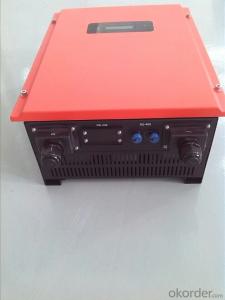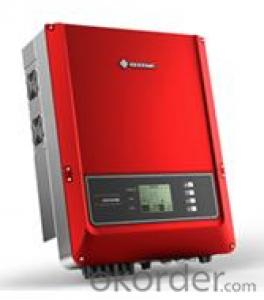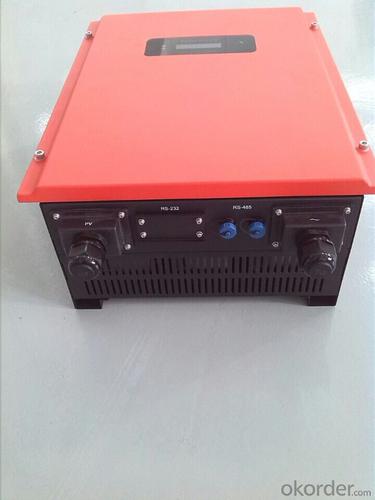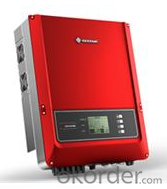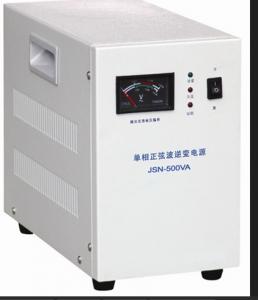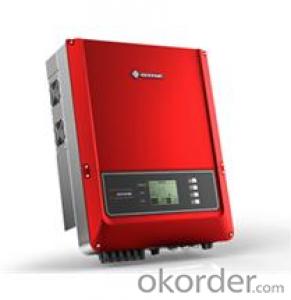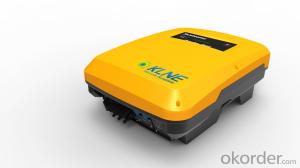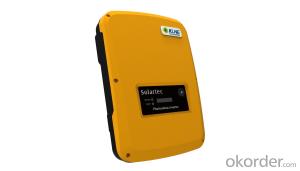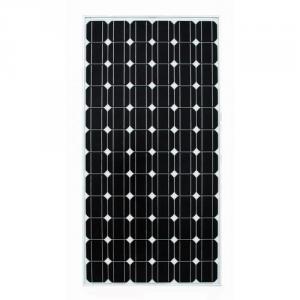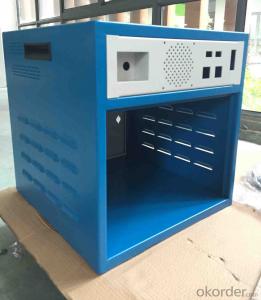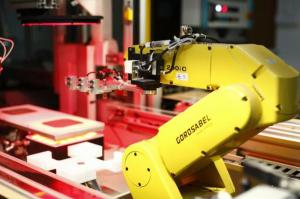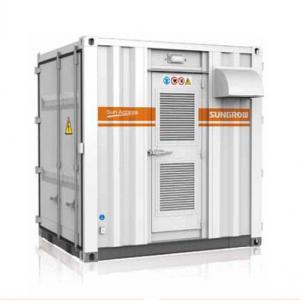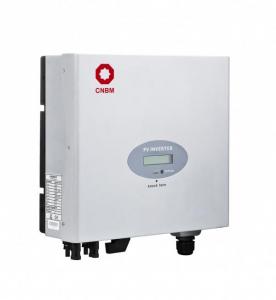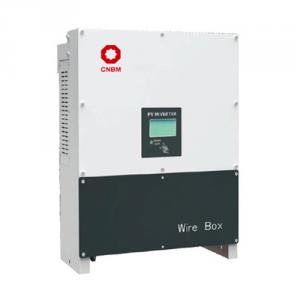Uno Solar Inverter Off Grid Type Solo-10000S
- Loading Port:
- Shanghai
- Payment Terms:
- TT OR LC
- Min Order Qty:
- 10 unit
- Supply Capability:
- 1000 unit/month
OKorder Service Pledge
OKorder Financial Service
You Might Also Like
Product Description:
This system can keep 10 energy-saving bulbs with 15W working for 5 hours per day and a 5W radio working for 8 hours a day. The AC load can keep a 33in color TV (90W) working for 5 hours, a 70W phonograph record machine working for 5 hours, a 200L fridge (180W) working for a whole day, a fan less than 60W running for 5 hours, a 300W computer working for 4 hours, two 100W laptops working for 5 hours, a 1000W water heater running for 1 hours, a 2000W electric stove working for 2 hours, and another 1000W appliance running for 3 hours.
It can work for 3 successive rainy days.
● System voltage:220V
● Output:220VAC/50Hz
● Power: 11000VA
● Dimensions of the box: 600 X 2000 X 600mm
● Net weight: 400kg
Product Datasheet:
Main Accessories | Specifications | No. | Notes |
Inverter | Solo-10000 | 1 | Standard |
PV modules | Polysilicon 100Wp | 68 pieces | Optional |
Storage battery | Lead acid, maintenance-free,2V/400Ah | 110 pieces | Optional |
Controller | Solo-VS220V/50A | 1 unit | Optional |
PV accessories shelf | customized | 1 set | Optional |
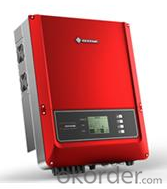
Product Advantages:
Powered by DC current
Can used out of doors
High effiency and low noise
FAQ
What is your payment terms?
We accept T/T payment, normally we need 20% T/T in advance, 80% payed before shipment.
What is your packing system?
We put the sistem in the wooden box.
Can you do OEM service?
Yes we can, but we need to do it with a certain order quantity.
- Q: What are the installation requirements for a solar inverter?
- The installation requirements for a solar inverter typically include a suitable mounting location, proper ventilation, and a stable electrical connection. The inverter should be installed in a shaded area, away from direct sunlight and extreme temperatures. It should be mounted securely on a sturdy surface, such as a wall or a rack. Adequate ventilation is necessary to dissipate heat generated during operation. Additionally, the inverter must be connected to the electrical panel or grid with the appropriate wiring and circuit breakers, following local electrical codes and regulations.
- Q: Can a solar inverter be used with different types of solar charge controllers?
- No, a solar inverter cannot be used with different types of solar charge controllers. The solar inverter and charge controller need to be compatible and specifically designed to work together for optimal performance and efficiency.
- Q: Can a solar inverter be used for residential applications?
- Yes, a solar inverter can be used for residential applications. A solar inverter is an essential component of a residential solar energy system as it converts the direct current (DC) generated by solar panels into usable alternating current (AC) electricity that can power household appliances and be fed back into the grid.
- Q: How does a solar inverter handle voltage sag and swell?
- A solar inverter handles voltage sag and swell by utilizing its power conditioning capabilities. When it detects a voltage sag (a temporary decrease in voltage), the inverter adjusts its internal control algorithms to provide a stable and consistent output voltage to the connected loads. Similarly, in the case of voltage swell (a temporary increase in voltage), the inverter modifies its operation to prevent overvoltage conditions and ensure a safe and regulated output. Through continuous monitoring and intelligent control, a solar inverter effectively manages voltage fluctuations to maintain stable power delivery.
- Q: Can a solar inverter be used with a solar water heating system?
- No, a solar inverter cannot be used with a solar water heating system. A solar inverter is designed to convert the direct current (DC) electricity produced by solar panels into alternating current (AC) electricity for use in the home or to be fed back into the grid. On the other hand, a solar water heating system uses the sun's energy to heat water directly, without the need for electricity conversion.
- Q: What is the role of a communication interface in a solar inverter?
- The role of a communication interface in a solar inverter is to facilitate the exchange of information and data between the inverter and other devices or systems. It allows for monitoring, control, and communication with the solar inverter, enabling real-time performance monitoring, remote management, and integration with other renewable energy systems or smart grid networks.
- Q: Can a solar inverter be used in a mobile or portable solar system?
- Yes, a solar inverter can be used in a mobile or portable solar system. In fact, it is a crucial component that converts the direct current (DC) generated by the solar panels into alternating current (AC) that can be used to power various devices and appliances. Portable solar systems often include a built-in inverter, allowing them to provide convenient and clean energy on the go.
- Q: Can a solar inverter be used with solar concentrators?
- Yes, a solar inverter can be used with solar concentrators. Solar concentrators focus sunlight onto a smaller area, increasing the intensity of the light. The solar inverter's primary function is to convert the DC power generated by the solar panels into AC power suitable for use in homes or businesses. Therefore, it can still be used to convert the enhanced DC power generated by solar concentrators into usable AC power.
- Q: What is the maximum input voltage that a solar inverter can handle?
- The maximum input voltage that a solar inverter can handle varies depending on the specific model and manufacturer. However, in general, most solar inverters can handle input voltages in the range of 150 to 600 volts DC.
- Q: How do you choose the right size of solar inverter for a system?
- To choose the right size of solar inverter for a system, several factors need to be considered. First, calculate the total wattage of all the solar panels in the system. This can be done by multiplying the wattage rating of each panel by the number of panels. Next, determine the maximum power output of the panels by considering factors such as shading and panel orientation. This will help you determine the maximum power in watts that the inverter needs to handle. Additionally, consider the inverter's efficiency and make sure it can handle the maximum power output of the panels. It is also important to consider future expansion plans and potential power requirements. Finally, consult with a professional or refer to the manufacturer's guidelines to ensure the chosen inverter is compatible with the system's voltage and other technical specifications.
Send your message to us
Uno Solar Inverter Off Grid Type Solo-10000S
- Loading Port:
- Shanghai
- Payment Terms:
- TT OR LC
- Min Order Qty:
- 10 unit
- Supply Capability:
- 1000 unit/month
OKorder Service Pledge
OKorder Financial Service
Similar products
Hot products
Hot Searches
Related keywords
